Your lawn may look like something you keep nice and neat. Understandably, you want to keep it that way. However, you may notice something that seems out of place. One day, you see yellow or brown patches across the grass. It turned your lawn into something of an eyesore.
However, dog pee spots don’t have to ruin your lawn forever. This guide will help you determine why these spots happen and what you can do to help your dog do their business outdoors without ruining your lawn. Remember that the right approach, patience, and consistency in care will make things easier for you, your dog, and, yes, even your lawn.
Why Does Dog Urine Damage Grass?
To understand dog pee spots on your lawn, it’s important to know why dog urine can damage it. One thing to know is that dog urine contains high concentrations of nitrogen compounds. While nitrogen can be great for grass for fertilization purposes, too much of it can be a bad thing. Plus, dog urine has enough concentration that it’s considered “too much for grass.”
As such, the chemical burn from the abundance of nitrogen will kill grass in the area where the dog goes to pee. That’s when you’ll notice the dead center of these grass spots. Plus, you may notice that the grass may grow thicker and greener compared to most areas, so it may seem a little out of place when you notice it. An outer ring of grass may receive diluted amounts of nitrogen, which are enough for healthy growth, while the inner ring and center get the overdone amount.
If your dog is female, they tend to squat and urinate in one concentrated area and create more noticeable damage in the process. Of course, male dogs will lift their legs and spread urine across a much wider area. It’s fascinating what kind of damage a dog could do to grass simply by doing its business. However, it’s a natural thing they do, so there’s no reason to get mad at them for simply doing a regular thing that ends up resulting in unintentional consequences for your lawn.
What Are the Immediate Steps to Take for Fresh Spots?
Minimizing damage from dog pee spots on a lawn may seem quite simple. Catching your dog in the act or noticing a fresh spot are two of the best times to address the issue. Keep in mind that the longer urine sits on grass, the more damage it can do. Here are some steps you can take:
- Using a garden hose, you’ll want to saturate the affected area with water. The purpose of this is to dilute the concentrated nitrogen so that it’s flushed deep into the soil. It’ll be deep enough so that the grassroots are not harmed. Use liberal amounts of water so you can completely wash the urine away instead of lightly sprinkling water.
- Alternatively, a large pitcher or watering can filled with water can be used to dilute the concentrated urine. It can still get the job done and prevent visible damage to your lawn.
The key here is to make it a regular habit whenever you see your dog urinating on the grass. While it may seem tedious, you’re doing your lawn a favor by preventing the appearance of those brown, dead grass spots that may pop up on your lawn over time. But what if you’re dealing with existing lawn damage? Let’s discuss what you need to do right now.
Repairing Existing Damage
If you are already dealing with grass spots that are brown and appear dead, don’t be discouraged. Repairing dog pee spots on lawns is possible. However, it will take effort and patience to get the job done. Let’s take a look at the necessary steps you need to take:
- Begin by using a small shovel or garden spade to remove the dead grass and two inches of soil below it. Believe it or not, the soil of the affected area (or at least two inches of it) is contaminated due to the excessive nitrogen salts. If it remains, grass growth will typically be prevented.
- Flush the area thoroughly with water. It should help leach out any remaining nitrogen compounds that may be left behind. Allow the area a day or two to drain. After this, consider repairing the lawn spots accordingly.
- Use fresh potting soil or high-quality topsoil to fill in the excavated area. This will serve as your new surface for grass growth. Make sure the surface level is created to match your lawn’s height. Lightly compact (not pack down) the soil to ensure the grassroots can establish themselves properly.
- Plant grass seed that is appropriate for your climate and lawn type. Alternatively, you can use small pieces of sod from less visible areas of your yard. If you are using seed, make sure the area is consistently moist until the new grass is set. This will usually take about two to three weeks. If you are using sod, immediate results are possible but may require careful watering so that proper rooting takes place.
What Prevention Strategies Should You Use?
Repairing the damage is one thing. However, taking preventative measures against dog pee spots is another effective long-term strategy that can work. There are plenty of approaches that either minimize or eliminate urine damage to grass. Here are some ideas to consider:
- Creating a Designated Bathroom Area: Your dog needs a place to use the bathroom, so why not give them a designated place outdoors? Most of the time, this can be a less visible corner of your yard. Train your dog to use this area in particular for their bathroom breaks. In addition, you can make the area more appealing using mulch, gravel, or artificial turf. Keep in mind that consistent training and positive reinforcement are keys to success. The good news is that most dogs can learn to use their designated spot regularly.
- Dietary Modifications: Did you know that dietary modifications can help reduce the nitrogen concentration that is found inside your dog’s urine? Yes, there are specially formulated supplements that can minimize the acidity of your dog’s urine. However, it is important to make sure you consult with your veterinarian before making any sort of dietary changes, regardless of the reason. At the same time, make sure your dog is hydrated regularly and drinks plenty of fresh water. This can help dilute a good amount of the nitrogen content naturally. Also, Under the Weather has these Nice Grass Urine Neutralizer Chews that can help.
- Adjust Your Dog’s Bathroom Schedule: This may be a good idea if you wish to make the post-urination watering process a lot easier. Be sure to accompany your dog outdoors during their bathroom breaks. This way, the moment they are done, you can water the spots where they went.
Long-Term Lawn Care Solutions
Your lawn’s health is just as important, so making it more resilient to occasional urine damage might be something worth considering. Minor urine spots may not be a big deal if the lawn is healthy and well-established; therefore, they recover on their own. However, grass that is thin or stressed may face more permanent damage. Here are some long-term lawn care solutions that are worth using:
- Regular Fertilization: This will keep nitrogen levels consistent throughout the entire lawn. As a result, the concentrated nitrogen in dog urine will be less of a shock to the grass itself. Once again, overfertilization is something you need to avoid. Not to mention, dog urine can exacerbate the issues for your grass, leading to more damage. Also, be careful when applying fertilizer or other treatments, as it could harm your dog, especially if they tend to eat grass here and there.
- Proper Watering: If you regularly water your lawn for recovery and prevention, it will do wonders for your grass. Deep, infrequent watering may be great for strong root development. At the same time, it can protect your water against chemical stress. However, if the watering is shallow and frequent, it may create weak grass that may be susceptible to damage.
- Overseed Annually: It may be a good idea to consider overseeding your lawn with grass varieties that are durable and able to recover easily. This includes tall fescue or perennial ryegrass. These are excellent in terms of recovering from urine damage compared to more delicate grass types.
- Perform a Soil Test: This will be great to determine if any underlying issues may contribute to lawn damage. Soil that is high in nitrogen or has pH imbalances is susceptible to significant damage, even if it’s exposed to small amounts of dog urine. Correcting these issues can lead to a more resilient lawn in the long term.
See What Under the Weather Has for Your Dog
We hope these tips on preserving your lawn from dog pee spots have been helpful. If you have a dog that you love a lot, they deserve all the love and care they need. At Under the Weather, we offer numerous foods and supplements for your dog. They are formulated to ensure a healthy lifestyle so they can move, play, and do business in an appropriate place on your lawn if needed. See what Under the Weather has in stock for your dog today.




